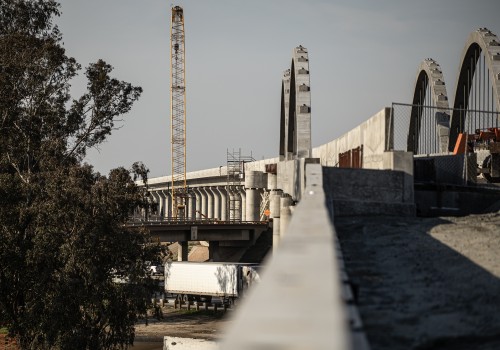As an expert in transportation and infrastructure, I have been closely following the rail projects in Los Angeles County, CA and their potential impact on traffic and road closures. With a population of over 10 million people, Los Angeles County is the most populous county in the United States. It is also known for its notorious traffic, which is why any construction project in the area is met with concern and anticipation.
The Rail Projects in Los Angeles County
Los Angeles County has been investing heavily in expanding its public transportation system through various rail projects. These projects aim to provide more efficient and sustainable transportation options for residents and reduce the reliance on cars.The Los Angeles County Metropolitan Transportation Authority (Metro) is responsible for planning, designing, and constructing these projects. One of the major rail projects currently underway is the Purple Line Extension, which will extend the existing Purple Line subway from its current terminus at Wilshire/Western to Westwood/VA Hospital. This project is expected to be completed in 2027 and will add nine new stations along the route. Another significant project is the Crenshaw/LAX Transit Project, which will connect the Crenshaw District to Los Angeles International Airport (LAX). This project includes a new light rail line, as well as a new station at LAX that will connect to the airport's people mover system. The project is expected to be completed in 2022. In addition to these two major projects, there are several other rail projects in various stages of planning and construction, including the Regional Connector, West Santa Ana Branch Transit Corridor, and Gold Line Foothill Extension.
Potential Disruptions to Traffic and Road Closures
With so many rail projects happening simultaneously, it is natural to wonder about the potential disruptions to traffic and road closures.The truth is, any construction project will have some impact on traffic, but the extent of the disruption will depend on various factors. The first factor is the location of the project. Some areas may experience more significant disruptions than others, depending on the existing traffic patterns and road infrastructure. For example, the Purple Line Extension is expected to have a significant impact on traffic in the Wilshire/Western area, as it involves tunneling under one of the busiest intersections in Los Angeles. The second factor is the construction method used. Some projects may require more extensive road closures and detours, while others may be able to minimize disruptions by using alternative construction methods such as building over existing roads or using underground tunnels. The third factor is the project's timeline.
The longer a project takes to complete, the longer residents and commuters will have to deal with disruptions. However, Metro has been working closely with local communities and businesses to minimize the impact of construction on their daily lives.
Mitigating Disruptions and Road Closures
Metro has taken several measures to mitigate disruptions and road closures during the rail projects. One of these measures is implementing a comprehensive traffic management plan for each project. This plan includes strategies such as providing alternate routes for drivers, coordinating with local law enforcement for traffic control, and adjusting construction schedules to avoid peak traffic hours. Metro has also been proactive in communicating with residents and businesses in the affected areas.They have set up community outreach programs to keep the public informed about the projects' progress and any potential disruptions. They have also established a hotline and email address for residents to report any issues or concerns related to the construction. Furthermore, Metro has been working closely with other transportation agencies, such as the California Department of Transportation (Caltrans) and local municipalities, to coordinate construction schedules and minimize disruptions on major roadways.
Conclusion
In conclusion, while there may be some disruptions to traffic and road closures during the rail projects in Los Angeles County, CA, Metro has taken several measures to mitigate these impacts. As an expert, I believe that these projects will ultimately provide significant benefits to the county by reducing traffic congestion and providing more sustainable transportation options. It is essential for residents and commuters to stay informed about the projects' progress and plan their routes accordingly.With proper planning and coordination, we can navigate through these rail projects and enjoy a more efficient and connected Los Angeles County.







